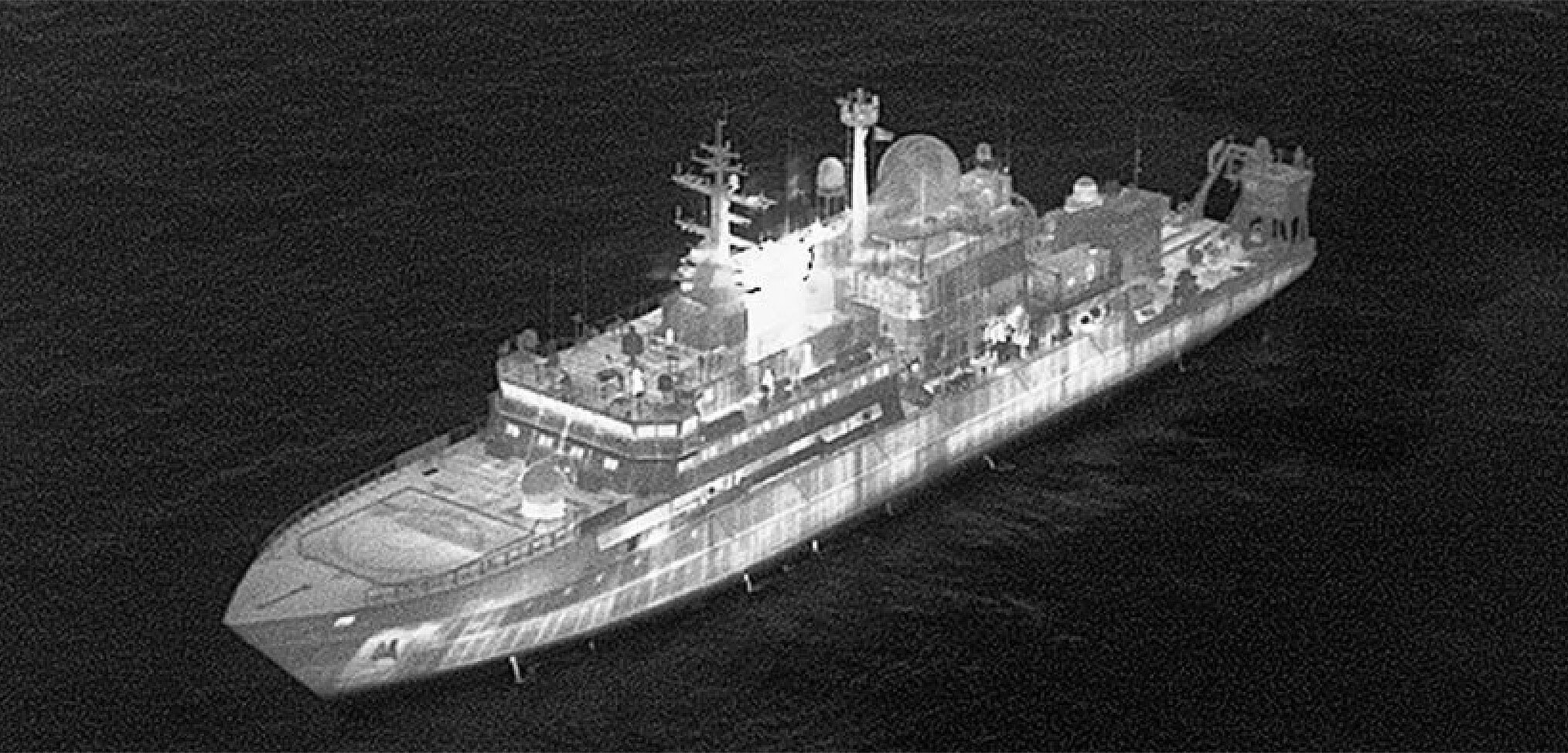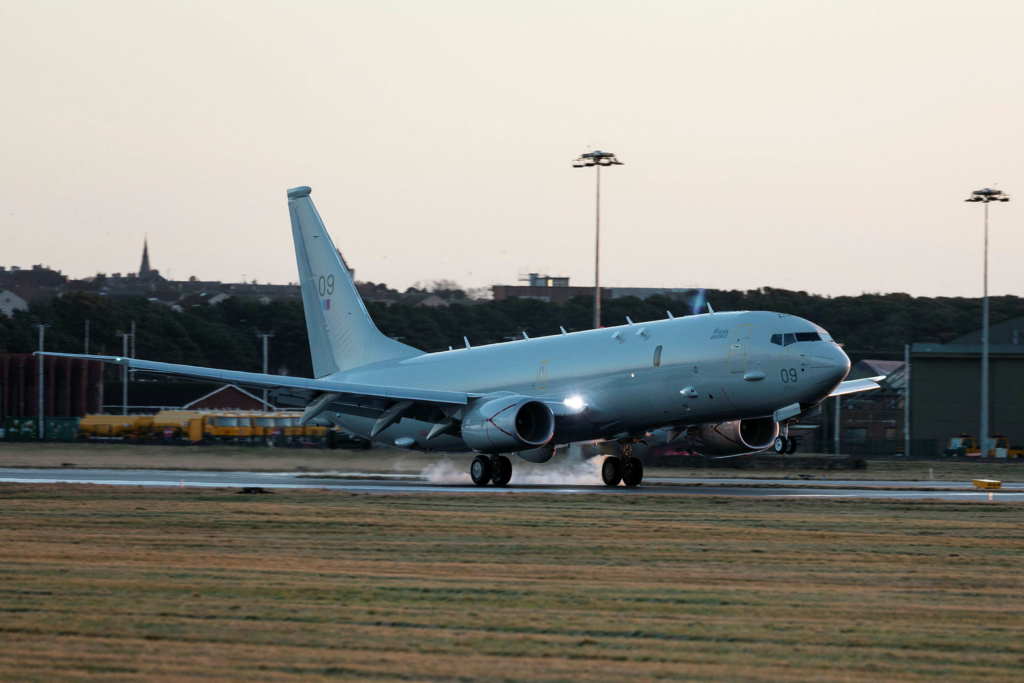UK amends rules of engagement after Russian laser strike on RAF Poseidon

November 20, 2025

The Russian spy ship, Yantar, is once again probing the United Kingdom and mapping its undersea infrastructure. For the first time, the ship directed lasers at an RAF aircraft sent to monitor the ship.
Russian spy ship points lasers at RAF pilots
Yesterday, UK Defence Secretary John Healey reported that the Russian intelligence-gathering ship, the Yantar, was on the edge of UK waters to the north of Scotland. This was the second time the Yantar was deployed to UK waters.
The Russian ship Yantar has again been operating near Scotland’s waters.
— John Healey MP (@JohnHealey_MP JohnHealey_MP) November 19, 2025
It directed lasers at RAF pilots monitoring its movements.
We will always defend the UK – at home and abroad. #StandWithUkraine pic.twitter.com/3bY8i3b8pG
The ship entered the UK’s waters over the last few weeks and is believed to be mapping the undersea cables. The British MoD stated, “It is one of many Russian vessels designed to threaten our Critical Underwater Infrastructure.”
In response, the Royal Navy dispatched the Type 23 frigate HMS Somerset, while the Royal Air Force dispatched the P-8 Poseidon maritime patrol aircraft to “track the vessel’s every move.”
However, the Yantar directed light lasers at the pilots on board the P-8 Poseidon. While the Yantar has been escorted by British and other NATO forces before, this was a new and hostile move.

In a press briefing, Healey addressed Russia, saying, “We see you. We know what you are doing. And if Yantar travels South this week, our Forces are ready to act.”
The Yantar was escorted away from Dutch and Belgian waters earlier in November. The vessel is equipped to be able to survey and potentially interfere with undersea cables and infrastructure. A year ago, the Yantar sailed into the Irish Sea. The HMS Astute nuclear attack submarine surfaced close to it as a warning.
Get the latest aerospace defence news here on AGN.
UK amends rules of engagement after laser attack
The Defence Secretary also announced he was amending the rules of engagement. Russia is using the lasers as it is operating in a grey zone to test and poke the UK without triggering a kinetic response.
The Defence Secretary @JohnHealey_MP this morning confirmed that a Russian spy ship – the Yantar – is on the edge of UK waters, north of Scotland, having entered the UK’s wider waters over the last few weeks.
— Ministry of Defence 🇬🇧 (@DefenceHQ) November 19, 2025
This is a vessel used for gathering intelligence and mapping… pic.twitter.com/GO6LXVAfgU
Navy Outlook noted, “Lasers have the potential to blind aircrew,” and reported the Defence Secretary said he had amended the rules of engagement. Now British ships will follow the Yantar more closely, as The Guardian reported, this distance is understood to be the equivalent of the length of a football pitch.
John Healey said, “Anything that impedes, disrupts, or puts at risk pilots in charge of British military planes is deeply dangerous.”
An escalating hybrid war by Russia
The development is part of an escalating hybrid war Russia is waging against the West. It comes right after Poland accused Russia of recruiting a Russian-sympathising Ukrainian to sabotage the railway line between Warsaw and Lublin.
To już pewne. Mamy do czynienia z aktem dywersji. pic.twitter.com/GASvlDz3iy
— Donald Tusk (@donaldtusk) November 17, 2025
The Russian hybrid war includes disinformation campaigns, election meddling, fighter jet incursions, drone incursions, drones flown over European airports, cyberattacks, and more.
Following repeated Russian fighter jet encursions, NATO countries discussed shooting down Russian jets the next time this happens. Some countries, like Poland, warned Russia they would, while others urged restraint. The last time a NATO country shot down an intruding Russian jet was when Turkey shot down a Russian Su-24 in 2015.
The closest known occasion NATO and Russian aircraft have come to a direct fight was in 2022 when a rogue Russian Su-27 fighter pilot fired two missiles at a British RC-135W Rivet Joint aircraft operating over international waters over the Black Sea. According to the BBC, one missile malfunctioned, and the other failed to hit the target for unknown reasons.

Faced with the new threats of small drones over airports and critical military infrastructure, the UK is one of the countries moving to loosen the rules to allow the military to take down drones.
Separately, the UK also announced it would build a network of new ammunition factories to boost the UK’s firepower.
Featured Image: RAF
















